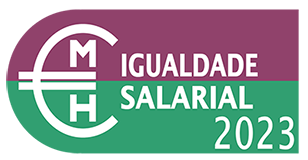Technology Offers
From discovery to market
Here are listed all the technologies available for cooperation opportunities, from licensing to other partnerships.
Want to know more about our available technologies? Please contact CIIMAR´s Technology Transfer and Business Development Office.
MARINE BIOACTIVE COMPOUNDS
Hierridin C as antimalarial and anticancer agent
Read more
Malarial drug-resistant strains are emerging worldwide, in
particular mefloquine and chloroquine-resistant, becoming a significant concern on a global scale.
There is a growing need for antimalarial agents for
monotherapy or multi-drug therapies. Therefore, new agents able to kill the resistant malaria parasites are warranted.
Sporeforming probiotic strains for aquaculture
Read more
Aquaculture sustainability requires the replacement of fish meal (FM) with plant feedstuffs (PF) in aquafeeds to reduce diet costs and environmental impact. However, the nutritive value of PF is limited by the presence of non-starch polysaccharides (NSPs). NSPs are not digested by fish, becoming a source of organic pollutants, negatively
impacting fish performance and gut health.
Napyradiomycins as antifouling agents
Read more
Marine biofouling is a significant problem for the maritime industry resulting in severe prevention and maintenance costs (billions €/year) for aquaculture, shipping and other industries that rely on coastal and off-shore infrastructures. In addition, fouling in vessels is the main cause of the propagation of non-indigenous marine species into ecosystems. In the past years, research efforts have been directed at finding additives with antifouling properties that are effective, sustainable and economically viable.
Xanthonic compounds and their use as antifouling agents
Read more
Biofouling is a severe concern to numerous industrial
sectors with costly high maintenance. The maritime industry has an enormous economic burden due to the drag friction caused by adhesion. This results in the increase of the ship’s weight which then leads to an increase in fuel consumption and, ultimately, more emission of greenhouse gases. The currently used antifouling techniques imply toxic biocides (banned within the EU).
Ultra-violet absorbing compounds with antimicrobial properties
Read more
Ultraviolet (UV) radiation is a harmful and mutagenic component, causing premature skin aging, eye damage, and skin cancer. In addition, blue-violet light may act as silent and long-term aging energy, causing inflammation, wrinkles, hyperpigmentation and others. There is a clear tendency for the development of broad range sun care products that can protect from UV-A, UV-B and blue-light.
Hydroxypheophorbide compounds as lipid-reducing agents
Read more
Obesity is an increasing epidemic, associated with several chronic diseases like diabetes, cardiovascular diseases, and cancer. There is an urgent need for effective lipid-reducing treatments.
Current therapeutic options present several limitations, such as severe side effects and challenges in long-term adherence. Some natural products are already being used in the clinic as anti-obesogenic compounds.
Marine compounds with antimicrobial activity
Read more
Infectious diseases caused by microorganisms stand as a
major threat to public health. In particular, antibacterial resistance has increased dramatically, becoming an emergency in healthcare. Likewise, malaria represents a major threat to the public health worldwide. The need to identify new chemical diversity is emergent, ideally with novel modes of action.
Halogenated compounds with antimicrobial and antibiofilm activity
Read more
Healthcare-associated infections are the most frequent
adverse cases in the healthcare settings worldwide, namely the biofilm-associated microbial infections related to medical devices. Staphylococcus aureus and coagulasenegative staphylococci are the most frequent pathogens found in those cases. Biofilm infections are difficult to overcome solely by using antibiotics, mainly due to inherent antibiotic resistance.
Cyanobacterial bioactive compounds for anticancer and antifouling activity
Read more
Cyanobacteria are a diverse group of photosynthetic
prokaryotes, known to produce secondary metabolites with promising bioactivities. These promising results push forward novel biotechnological applications to deliver new chemotherapeutic agents to aid cancer treatment and novel strategies to combat the economic and ecological burden of marine biofouling.
Natured-inspired antifouling compound
Read more
Biofouling is a burden to numerous industrial sectors. Moreover, it contributes to the emission of more
greenhouse gases, due to an increase in the ship’s weight caused by the organism-augmented drag friction. Currently used anti-adhesion techniques imply toxic biocides (banned within the EU). In addition to inhibiting the settlement of biofouling species without causing mortality, new antifouling agents should also be compatible with commercial marine coatings.
New cationic steroids with antimicrobial properties
Read more
Currently, multidrug-resistant (MDR) infections are one of the most worrisome threats, driving the search for new antimicrobials compounds. Therapeutic choices for fungal
diseases are also limited, particularly for invasive infections, and resistance has been described for all antifungal agents, including for Candida species.
Antifungal agents to combat the chestnut brown rot fungus
Read more
The fungus Gnomoniopsis smithogilvyi (Gs) is responsible for brown chestnut rot that damages the fruit after harvest and causes wood cankers in the chestnut tree – responsible for massive losses in the chestnut sector. There are currently limited options to fight this fungus, which consists only of synthetic fungicides that have a
significant impact on the environment, as well as on human and animal health – which for this reason will be banned.
PRODUCTS, SYSTEMS AND METHODS FOR AQUACULTURE
Autonomous aquaculture fish feeding system
Read more
In aquaculture, fish growth and feed intake are influenced by environmental temperature and salinity, causing extreme variations in daily consumption. Overfeeding represents 15-25% of waste production in fishfeeding – associated with high nitrogen discharges in coastal areas. There is a need for more efficient and sustainable aquaculture feeding systems.
Teleost fish larval diets supplemented with natural extracts for fish growth performance
Read more
Senegalese sole and gilthead seabream are two valuable
flatfish species that have low survival rates during the hatchery phase. Fish larvae have high growth potential, but also high cellular metabolism, leading to oxidative damage and protein degradation.
Cold extruded feed formulation for sea urchin
Read more
Sea urchins, such as Paracentrotus lividus, face challenges due to overexploitation of their natural stock and seasonal reproductive cycles, which affects the quality and characteristics of their gonads – a prized gourmet seafood. Aquaculture is a potential solution to meet the commercialization demand. However, current artificial diets are not suitable for large-scale production, as they make the feed labour-intensive and are expensive to produce.
New hydrolysates to control bacterial infections in fish
Read more
Bacterial outbreaks, particularly Tenacibaculum maritimum infections, often occur in marine aquaculture farms, resulting in high mortality rates. Until now, outbreaks are usually treated with antibiotics, which can lead to the development of resistant bacteria. Blood hydrolysates can contain useful compounds including bioactive peptides with interesting properties, such as antioxidant, mineral-binding, immunomodulatory or antimicrobial, which makes them useful in fish farming as an alternative to antibiotic use.
Enzyme-rich extract for improvement of aquafeeds
Read more
As the world population is increasing exponentially, there is a great demand for food. To meet this demand, there is a need for improved and efficient feed production, namely protein-rich aquafeed. Brewer’s spent grain (BSG) is lignocellulosic biomass mainly composed of fiber and proteins, a desirable byproduct of the brewing industry. BSG can be transformed into enzymerich extracts through solid-state fermentation (SSF).
METHODS FOR EXTRACTION OF BIOACTIVE COMPOUNDS
Method for obtaining rich-protein extracts from algae
Read more
Algae extracts are rich in several bioactive compounds that can increase health and provide environmental benefits. At an industrial level, there is a pressing need to have more efficient algae biomass-extracting methods, that can meet the needs of the use of this resource.
DEVICES AND METHODS FOR ENVIRONMENTAL MANAGEMENT
Autonomous device for capturing aquatic eDNA
Read more
Aquatic environmental DNA (eDNA) provides critical insights into the biodiversity and functioning of marine and freshwater ecosystems. It reflects the presence of a wide range of organisms, from microbes to higher trophic levels, and helps reveal complex biological interactions. Studying the diversity and dynamics captured through eDNA is essential for understanding and protecting these ecosystems.
Synergistic bioremediation composition for hydrocarbon pollutant degradation
Read more
Hydrocarbon pollution from anthropogenic activities threatens our marine ecosystems, whether by acute events of contamination, such as oil spills, or chronic contamination. Bioremediation technologies are considering promising ecologic alternatives to the current physical-chemical
techniques used to tackle hydrocarbon pollution.
Underwater metabolic chamber
Read more
Metabolic studies in underwater environments are crucial
for understanding ecological dynamics and health of aquatic ecosystems, namely from marine communities. Accurate in situ measurements of rates of productivity and respiration are hard to obtain, with several impediments the current equipment’s used.



